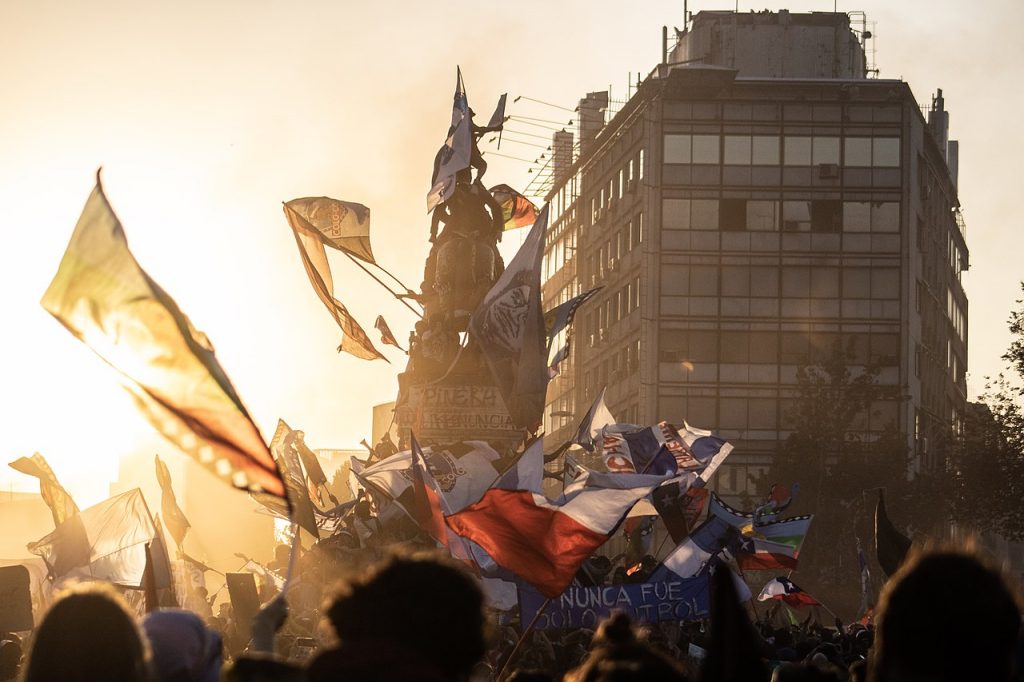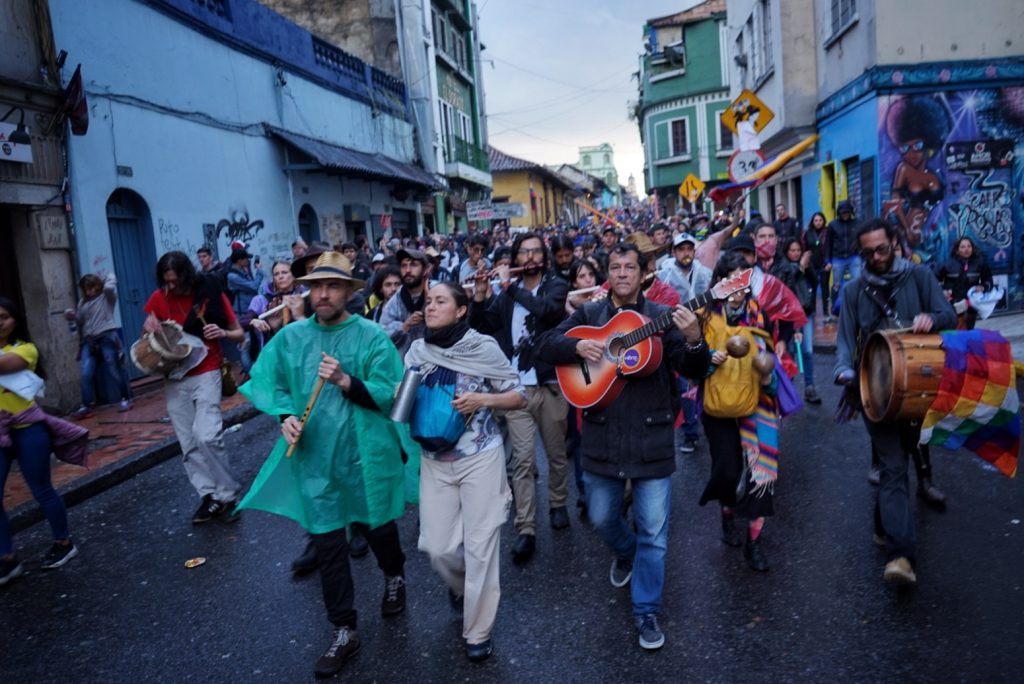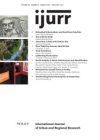When we began work on this “Spotlight On” in November 2019, the world was a very different place. Urban street protests were underway across the planet; and each week, it seemed, another national strike or public action was being called. In public squares and on city streets from Hong Kong to Beirut to Bogotá, citizens were decrying government abuses and economic hardships. But by mid-March, Covid-19 had cleared the streets. The grievances that prompted the protests had not been resolved, but government lockdowns and public health concerns sent protestors back inside. Political theorists mused about the end of mass protests, even as ineffective public health responses and economic catastrophe underscored earlier grievances. In some cities, such as Lebanon, the halt was temporary, as protestors weighed the risks of Covid against humiliations by the state, and took the risk. In U.S. cities, rightwing activists organized marches on state capitols to contest lockdowns and mask requirements. But in early June, George Floyd’s murder at the hands of the Minneapolis police ignited racial justice protests across the U.S. and brought citizens around the world back onto city streets. Now, nearly a year after this Spotlight On was first proposed, the topic of urban revolts remains more relevant than ever.
The five incisive essays reflect on the substance and spatiality of the urban street protests in the cities of Santiago de Chile, Beirut, Paris, Bogotá, and Hong Kong. Having begun their essays before the world had heard of Covid-19, and tracing developments over the long 2020, all five authors underscore the durability of street protests as a political form and cities as sites of public claims-making. In doing so, they reflect upon the spatial configurations, institutional densities, and staging areas that make cities – both major economic centers and smaller regional capitals – effective venues for public action.

Evening of protest at Plaza Baquedano, Santiago de Chile. Photo: Wikimedia Commons/Gonzalo Mendoza
With respect to the claims, the essays highlight both the locally specific grievances and the global concerns about economic inequality and democratic retrenchment that have drawn citizens to the streets. As César Guzmán-Concha explains in the case of Santiago, a hike in transportation fees that was initially contested by secondary school students quickly morphed into a broader critique of the socioeconomic order that privileges large corporations and political elites. Similarly, the occupation of Paris streets by the Gilets Jaunes, as Claire Colomb details, was sparked by an increase in the “green tax” on diesel fuel but tapped into a more universal sense of “fiscal injustice.” Yet in many contexts, particularly in Beirut, concerns over economic disparities have been inseparable from outcries over political cronyism and demands for regime change.
The 2019-20 protests in Hong Kong, on the other hand, have been driven more by the intensification of democratic retrenchment than existing economic inequality. As Carolyn Cartier explains, the focus of the Anti-Extradition Law collective action has focused on achieving political rights and freedoms in relation to new territorializing measures by the government. Building on and diverging from the Hong Kong Occupy movements, the recent mobilizations have responded to unprecedented strategic policing in the subway system and new forms of weaponry on the streets.
In addition to the substance, the essays speak in important ways to the spatiality of the mobilizations. While some essays focus more on the spatial questions than others, each offers insights into the urban geography of street protests and activists’ strategic use of urban space. Offering an urban perspective on Colombia’s Paro Nacional, Sergio Montero and Isabel Peñaranda explain that Bogotá’s “usual protest hotspots – such as the historic Plaza Bolivar in the center of the city – were joined by new circuits and points of gathering and confrontation, including the middle-class neighborhoods of Chapinero and Teusaquillo.” The protestors in Beirut, as Mona Fawaz and Isabela Serhan explain, have also strategically chosen the settings for their actions. Critiquing the developer-driven privatopias built during the 1990s post-civil war reconstruction, protestors have appropriated and reactivated the buildings (and the democratic publics) abandoned by capitalist urban restructuring. In Hong Kong, the protests have entailed a profusion of DIY protest posters placed in public sites of pedestrian passage. (The poster category of the ANTIELAB Research Data Archive at the University Hong Kong registers their significance.) Claire Colomb’s analysis of the spatiality of the Gilets Jaunes, on the other hand, expands our focus beyond the city boundaries, helping to further unsettle assumed geographies that locate leftwing protests in urban centers and relegate those on the right to the countryside.

Artists and musicians protesting in Bogotá’s streets, November 2019. Photo: Isabel Peñaranda, 2019.
Read together, the five essays highlight the commonalities and differences across a planet of urban revolts. Beyond emphasizing the durability of such protests and the creative power of the protestors, they offer few definitive conclusions about the present or future of street protests. Yet in a time of instability and uncertainty, perhaps it is comforting that citizens will continue to take to city streets to demand a more just and inclusive socioeconomic and political order.
In addition to the new essays in this collection, we are providing access to several previously published IJURR articles on the topic of urban revolts. These articles, which comprise what are now some of the foundational works in the study of urban social movements, can be read afresh in light of the newest round of urban protests. They continue to help us ask critical questions about the durability of urban street protests and to better understand the sociospatial dynamics specific to their sites of research and those that link them to others around the world.
Liza Weinstein
Interventions Editor
October 2020
All essays on Urban Revolts
Introduction: The Spatiality of Street Protests before and during Covid-19
Liza Weinstein
When the Pandemic Meets the Insurrection. Santiago, Chile
César Guzmán-Concha
Urban Revolutions: Lebanon’s October 2019 Uprising
Mona Fawaz & Isabela Serhan
The Revolt of the “Periphery” Against the “Metropolis”? Making Sense of the French Gilets Jaunes Movement (2018-2020)
Claire Colomb
An Urban Perspective on the Colombian “Paro Nacional”
Sergio Montero & Isabel Peñaranda
The Predicament of Hong Kong and the Spatial Expanse of Territorial Governance
Carolyn Cartier
Related IJURR articles on Urban Revolts
Institutionalization and Depoliticization of the Right to the City: Changing Scenarios for Radical Social Movements
Sergio Belda-Miquel, Jordi Peris Blanes and Alexandre Fredian
Do‐it‐yourself urbanism and the right to the city
Kurt Iveson
Glocalizing protest: urban conflicts and the global social movements
Bettina Köhler, Markus Wissen
Permitting Protest: Parsing the Fine Geography of Dissent in America
Don Mitchell, Lynn A. Staeheli
The Urban Question Revisited: The Importance of Cities for Social Movements
Walter J. Nicholls
Urban Segregation and Metropolitics in Latin America: The Case of Bogotá, Colombia
Joel Thibert, Giselle Andrea Osorio
© 2020 THE AUTHOR. INTERNATIONAL JOURNAL OF URBAN AND REGIONAL RESEARCH, PUBLISHED BY JOHN WILEY & SONS LTD UNDER LICENSE BY URBAN RESEARCH PUBLICATIONS LIMITED
This is an open access article under the terms of the Creative Commons Attribution-NonCommercial-NoDerivs License, which permits use and distribution in any medium, provided the original work is properly cited, the use is non-commercial and no modifications or adaptations are made.
